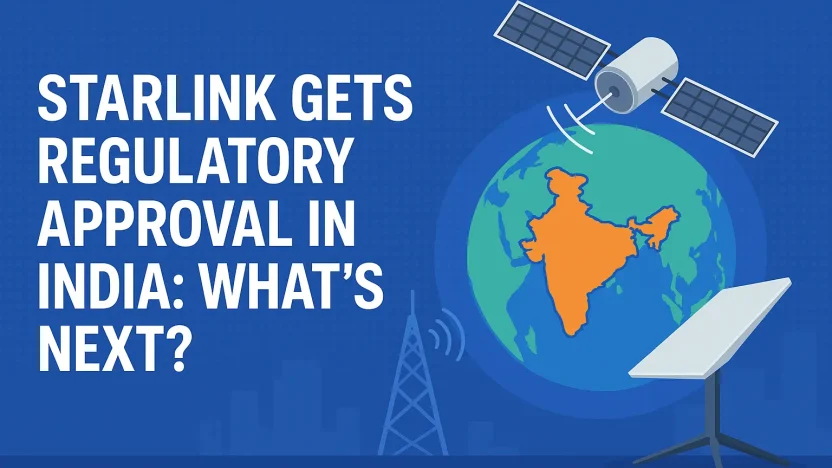Starlink Gets Regulatory Approval in India: What’s Next?
In a major development for India’s digital future, Starlink regulatory approval in India is finally a reality. Elon Musk’s SpaceX-owned satellite internet venture has received a 5-year license from IN-SPACe (Indian National Space Promotion and Authorization Center). So, what does this mean for internet users, the telecom sector, and underserved rural regions? Let’s break it down.
What Exactly Was Approved?
Starlink has been granted approval to operate its Gen1 low-earth orbit (LEO) satellite constellation. This includes 4,408 satellites offering a combined bandwidth of 600 Gbps. While it still requires additional clearances, including from India’s Department of Telecommunications (DoT), this is a huge leap forward for satellite internet services in the country.
Why India Matters to Starlink
India is a massive market with over 1.4 billion people—and yet, millions still lack access to high-speed broadband, especially in rural and remote areas. With the Digital India initiative aiming to bring connectivity to every corner, Starlink’s technology could be a game-changer.
The timing couldn’t be better. The demand for reliable internet in rural schools, telemedicine, and even disaster-hit zones is skyrocketing. Starlink offers the kind of plug-and-play solution that doesn’t rely on ground infrastructure like fiber optics or mobile towers.
How Will Starlink Compete in India?
India’s internet space is fiercely competitive, with giants like Jio, Airtel, and BSNL dominating broadband and mobile data. But Starlink’s regulatory approval in India positions it uniquely—it’s not trying to replace existing ISPs. Instead, it aims to serve areas they’ve traditionally ignored.
- Rural Schools & Hospitals – providing stable internet in low-density regions
- Disaster Recovery Zones – restoring communications quickly after floods, cyclones, etc.
- Enterprises in remote areas – mining, oil & gas, research stations
Challenges on the Horizon
Of course, it’s not all smooth sailing. Here are some roadblocks Starlink may face:
- Pricing: Starlink is relatively expensive—will it become more affordable in India?
- Regulatory Scrutiny: Ongoing licensing hurdles and spectrum allocation still loom
- Local Competition: Bharti Airtel-backed OneWeb and Amazon’s Project Kuiper are eyeing the same space
What’s Next for Starlink in India?
Starlink plans to roll out beta services once it receives final clearance from DoT. If all goes well, rural villages could start seeing kits by early 2026. The company is also expected to set up ground stations and partner with local ISPs or distributors to handle customer service and logistics.
For India, this could be the dawn of a new internet era—one where geography is no longer a barrier to connectivity.
Final Thoughts
Whether you’re in tech, education, healthcare, or rural development, Starlink regulatory approval in India signals a future of high-speed internet access beyond the urban elite. It’s still early days, but the satellite internet race is officially on—and India is now a key player in it.
Want to stay updated on Starlink’s rollout or explore how it stacks up against India’s existing broadband services? Bookmark our blog or sign up for our newsletter!



